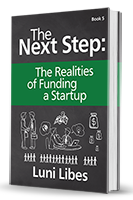A recipe for a 10x return…
Not all startups are the same. Within the community of technology investor-bloggers on the Web, many have claimed that the term “startup” should be limited to high-growth startups, rather than include the other half million companies that are started each year (in the U.S.).
For these high-growth investors, there is one common investment “thesis,” i.e., one set of features that deals must follow:
- Huge opportunity
- High growth plan
- Team to execute
The first feature is the scale of the opportunity. Referring back to The Next Step: Guiding you from idea to startup, the opportunity size is defined as the number of customers who might buy your product (a.k.a. the market size), multiplied by the price, multiplied by the average number of units each customer will buy. For a deal to be “venture scale,” the opportunity size needs to be in the high hundreds of millions of dollars or larger, ideally billions of dollars.
Second, there needs to be a believable business plan that grows fast enough to grab a significant portion of the market within three to five years. Such a plan could grow from $250,000 in revenues in year one to $1 million in year two, $5 million in year three, and up past $20 million in year five. Or sometimes double or triple this scale. The only realistic way to grow a company that quickly is to invest tens of millions of dollars over the first few years, if not hundreds of millions of dollars. Given venture capitalists have such levels of funding at their disposal, they are attracted to companies like these.
Third, there needs to be a great, trustworthy team to pursue this opportunity. Ideally, a team in which at least some of the investors have invested before, or one whose members have proven themselves capable in past efforts at hiring and managing teams of hundreds of workers, at managing and spending millions of dollars of investment capital, at closing sales with customers, and at raising the quantity of capital required over the multiple years it takes to reach profitability.
Look at the news stories of the companies receiving venture capital investments, and you should see these three features in every one of those famous deals.
Team, team, and team
Meanwhile, what is interesting is that when you ask professional investors and VCs what they look for in investments, their answer is “team.” It takes a great team to execute one of these venture scale startups, and great teams are rare.
However, in reality, team is the third item on the list.
This difference is inherent in the system used by professional investors. At Angel groups, the screening committee eliminates the deals that are too small to interest their members. At VCs, the “associates” ensure that the deals reviewed by the partners are venture scale.
Thus, for professional investors, the first two factors need not be addressed directly, leaving team as the foremost factor to consider. Which, for entrepreneurs, means that you should do everything you can to ensure the opportunity size you talk about is as large as possible, so as not to be summarily excluded from consideration by investors.
You want your opportunity size to be big enough to make investors salivate, but not so big as to be unbelievable.













